Creativity in piano lessons allows teaching to be flexible. I dedicate about half of the lesson to the individual needs and desires of the student, and the other half is committed to what I think they should learn.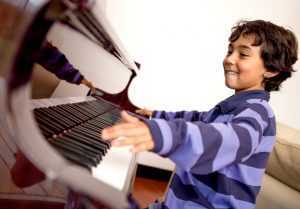
Why is Creativity in piano lessons important?
Creativity is valuable because it requires us to apply our skill with flexibility. Without it, lessons are hardly more than memorization and repetition. Including creative activities in lessons is a valuable assessment of skill because it proves we have a strong grasp of the technical foundations that are applied in the process. Besides facilitating the learning process, creativity in piano lessons can also have a strong positive psychological impact, especially because improvising can be a lot of fun. 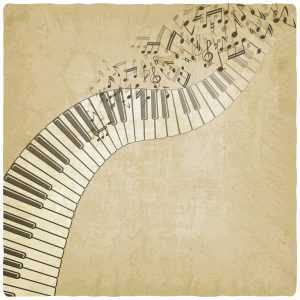
But making music lessons creative is usually a daunting task considering the way they are typically taught today. It is common for students to make it all the way up to earning an advanced degree in performance without being comfortable improvising. To put this into perspective, let me compare it to taking another class: you can develop a great French accent if you memorize French phrases, but if you never converse in French, your understanding of the language will be very limited. This is similar to learning music by rote and the way it is usually taught: if you can play by rote, it may sound good, but every time you learn a new piece, it will be the same tedious process over and over again – learning note after note. If you would take music lessons where you only copied all the notes to great compositions, would you, then, attend a French class where all you did was memorize French phrases? This method of parroting can, ironically, make music lessons less creative than taking a French or, say, Mathematics class.
Are our music lessons really creative now?
Unfortunately, most piano students, especially those taught in the Classical tradition, need to address improvisation as a subject of remediation by the time they reach intermediate or even advanced levels of playing. This is not surprising, considering that preservation is the essence of Classical music. But the tradition of improvisation seems mostly forgotten. Maybe we should take note of the difference between Classical training and Commercial music training: while most classical music students lack improvisation ability, students of contemporary styles typically are much stronger in this area even though they are often weaker in technique.
 This dichotomy between Classical music and Commercial music training exists for a good reason. The split between Commercial/improvised and Classical styles was probably caused by the practical needs of an age before recorded music, resulting in an illiberal performance tradition inspired by the need to hear a printed score. Without recordings, the music was heard only if someone had the facility to play it. Even the term “recital,” first coined by Franz Liszt as a musical term rather than a poetry term, shows a desire to preserve the tradition of “reciting” famous music. Yet if I may use another example from this same piano legend, he was also known in his time for exceptional improvisational ability. He was one famous improviser among many others throughout the history of Western music, but the tradition of improvisation is hardly recorded due to its inherently spontaneous nature, and all we have are the composed manuscripts written by the composers. Being aware this, we should not fall for the illusion that simply playing the music of whatever appears in manuscript form, constitutes a thorough development of musicianship.
This dichotomy between Classical music and Commercial music training exists for a good reason. The split between Commercial/improvised and Classical styles was probably caused by the practical needs of an age before recorded music, resulting in an illiberal performance tradition inspired by the need to hear a printed score. Without recordings, the music was heard only if someone had the facility to play it. Even the term “recital,” first coined by Franz Liszt as a musical term rather than a poetry term, shows a desire to preserve the tradition of “reciting” famous music. Yet if I may use another example from this same piano legend, he was also known in his time for exceptional improvisational ability. He was one famous improviser among many others throughout the history of Western music, but the tradition of improvisation is hardly recorded due to its inherently spontaneous nature, and all we have are the composed manuscripts written by the composers. Being aware this, we should not fall for the illusion that simply playing the music of whatever appears in manuscript form, constitutes a thorough development of musicianship.
There is, for sure, a dichotomy in the expectation of improvising between Classical music and what is often referred to as Contemporary or Commercial Music. The way lessons are taught for Commercial music are usually much more creative than Classical, requiring an interpretation of chord charts, playing by ear, and overall, utilizing more functional keyboard skills such as transposing, “comping,” and improvising.
How can we make piano lessons more creative?
Since most of you reading this are either a student or a teacher looking to add more creativity in piano lessons to the traditional curriculum, I offer some resources and ideas that I have found useful for developing skill in improvisation.
For Beginners: While many basic methods such as Alfred or Faber’s Piano Adventures include some improvisation in their method, this technique or a slight variant of it can be applied to nearly any piece to practice improvisation:
- Determine what scale(s) and/or hand position(s) the piece is in, and whether all of it is easy enough for the student to improvise over.
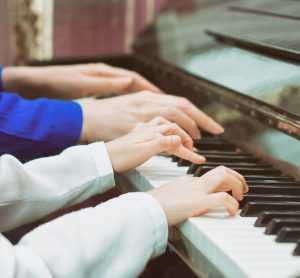
- At the end of the head, the student improvises in that scale while the teacher creates an accompaniment over the chord changes, encouraging the student by imitating and developing their ideas.
For intermediate students: With an understanding of basic harmony as a basis, explore playing at least some pieces from charts or lead sheets, modifying chords with tensions, inversions, and voicings. Basic accompaniment patterns such as stride and bossa nova can be applied to many marches and even some popular tunes to add more creativity in piano lessons.
For example, stride has worked with Andrew Lloyd Weber’s “Masquerade” and the Internet phenomenon of “Spooky Scary Skeletons.” Bossa Nova or many Latin Jazz patterns work with something like the chart for Duran Duran’s “Rio.” The theme to the Nintendo game Zelda can be made very pianistic with octave doublings and open chord voicings – and the list goes on. This is also a good time to add blues scale improvisation to any method book piece using that style by playing a solo over the changes and returning to the head.
For advanced students: Improvisation is imaginative, rather than technical. For advanced students that feel far behind in improvisation, I recommend a thorough and systematic method book Improvisation at the Piano: A Systematic Approach for the Classically Trained Pianist by Brian Chung. Students should work towards thinking of chords as scales and modes, to develop the ability to think linearly and develop long phrases.
The goal of improvising
As always, the end goal of practicing improvisation and creativity in piano lessons is to be able to convey an idea with enough facility to channel your musical vision without it getting lost by technical problems along the way. I believe the style of music we enjoy the most is the best for us to develop our improvisational ability, because when we enjoy the music, we can effectively evaluate our ideas based on how they convey that aesthetic experience we enjoy in it.

Conversely, practicing in a style we do not enjoy is like trying to paint without being able to see – we have no artistic vision to follow. So, in summary, have fun! The point of adding creativity to piano lessons is to let it happen, focus on the musical vision, and enjoy being free from perfectionism.




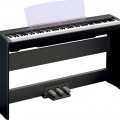
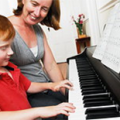
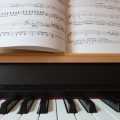

For me, if I ask, I will choose both, but its better to learn traditional piano lesson first before non-traditional, it is important to know the basic first…!